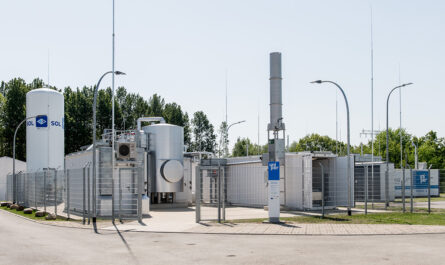 Solar vehicles have the potential to revolutionize the transportation industry and help reduce fossil fuel emissions. Powered solely by energy from the sun, these innovative vehicles produce zero direct emissions and can help address issues of air pollution and climate change. As solar panel and battery technology continues to advance, solar vehicles are becoming more viable and affordable options for daily transportation needs. This article explores the growth of the solar vehicle industry and its prospects for widespread adoption.
Solar vehicles have the potential to revolutionize the transportation industry and help reduce fossil fuel emissions. Powered solely by energy from the sun, these innovative vehicles produce zero direct emissions and can help address issues of air pollution and climate change. As solar panel and battery technology continues to advance, solar vehicles are becoming more viable and affordable options for daily transportation needs. This article explores the growth of the solar vehicle industry and its prospects for widespread adoption.
History and Development
The idea of powering vehicles with Solar vehicles is not new. Some of the earliest attempts at solar vehicles date back to the 1970s and 1980s with experimental cars created by researchers and hobbyists. However, it wasn’t until the 1990s and 2000s that solar vehicle technology began to rapidly advance. Major universities started hosting famous solar vehicle races like the World Solar Challenge which helped accelerate innovation. Early successes in these races proved that solar power could efficiently propel a vehicle over long distances.
Around this time, some pioneering automakers also started building limited production solar electric prototypes. Companies like General Motors, Renault, and Toyota explored the viability of solar power for passenger vehicles. By the late 2000s, fully functioning passenger solar cars had been revealed with capabilities similar to electric vehicles. These early prototypes achieved ranges up to 50 miles on a full solar charge and paved the way for the passenger solar vehicles of today.
Breakthroughs in Batteries and Panels
A major breakthrough that accelerated solar vehicle development was advances in lithium-ion battery technology. Lithium-ion batteries started outperforming other battery chemistries, allowing for higher energy density and longer charge durations. This enabled solar vehicles to store more energy from their panels and travel further on a single charge.
Advances in solar panel efficiency were another critical factor. New panel materials and designs increased how much energy could be harvested from sunlight. High-efficiency mono- and polycrystalline solar cells started becoming affordable options. By 2010, commercially available solar panels had reached efficiencies over 20%, significantly boosting the range potential of production solar cars.
Today’s Solar Vehicles
These technological breakthroughs have led to exciting production solar vehicles becoming available. Lightweight electric vehicles like the Aptera and Sono Motors Sion integrate solar panels directly into their bodywork and roofs. They are capable of sustainable daily commutes or longer trips with average solar ranges between 40-100 miles depending on factors like location and weather.
Larger electric vehicles with integrated or removable solar panels are also arriving. The Lightyear 0 is a passenger solar car that can achieve up to 800 km of range in optimal conditions from battery and solar charging combined. The Fisker Ocean SUV has an available solar roof option that can provide over 1,000 extra emissions-free miles per year. And commercial electric vans from companies like Ford and Rivian now offer solar roof upgrades as well.
Future Outlook and Adoption
Experts project the solar vehicle market will see significant growth in the coming decades as technologies continue advancing. Key drivers will be cost reductions in solar panels and batteries, which are experiencing exponential improvement trends. As solar integrations become increasingly affordable, more automakers are expected to offer them as standard or optional features across a variety of vehicle classes.
Some forecasts indicate solar cars could realistically capture 5-10% of new light-duty vehicle sales in developed nations by 2030 through a combination of consumer demand for sustainability and potential government incentives. Their zero emissions make solar vehicles well-positioned to adhere to tightening environmental regulations as well. Widespread charging infrastructure and standardization will also be important for bolstering consumer confidence in the solar automobile market.
In conclusion, Solar vehicles have come a long way from their early experimental days and are now a commercially viable mobility solution. Advances in solar panels and batteries have helped propel their performance and expand applications from niche racers into desirable passenger vehicles. As the technology continues progressing alongside growing consumer demand for sustainability, solar integration looks set to proliferate across light-duty vehicles in the coming years. With refined innovation and enabling infrastructure, solar power has the opportunity to revolutionize surface transportation worldwide and aid efforts against climate change through widespread zero-emissions mobility. This makes investing in the growth of the solar automobile industry strategically important for a renewable energy future.
*Note:
1. Source: Coherent Market Insights, Public sources, Desk research
2. We have leveraged AI tools to mine information and compile it



